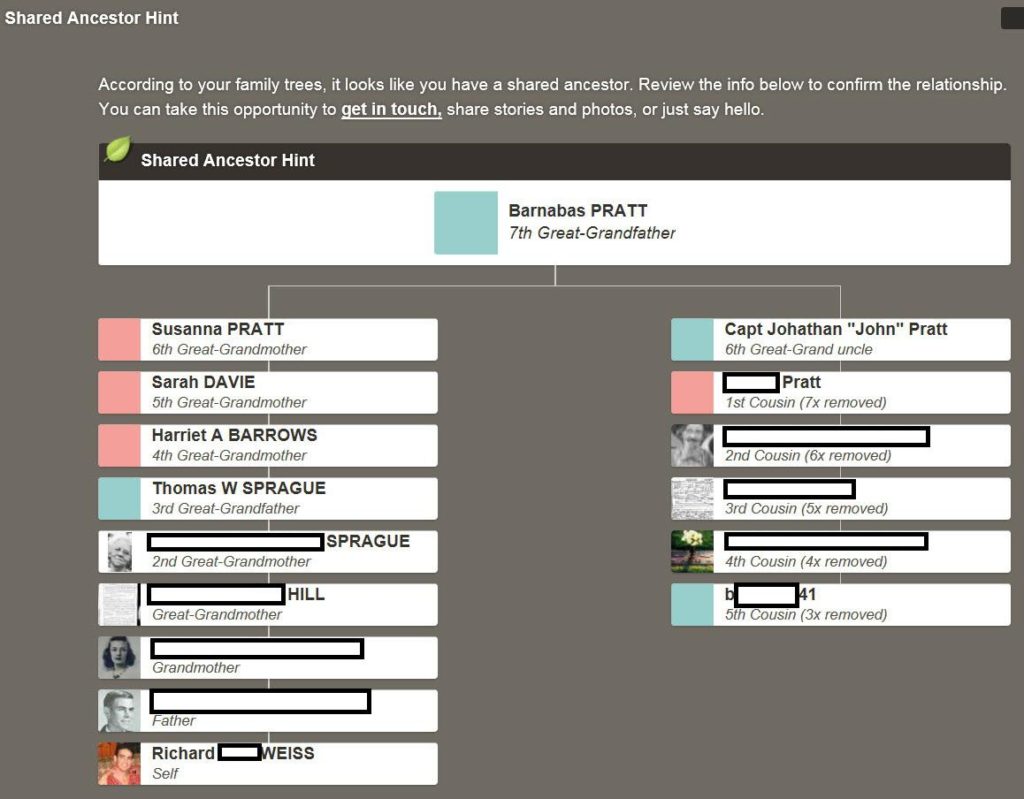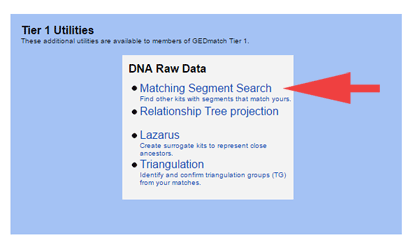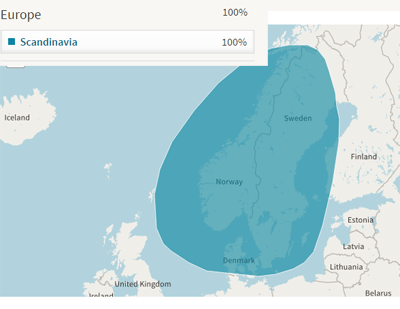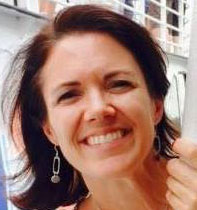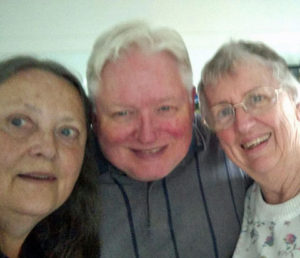By Richard Weiss, Director of Programs, DNAadoption.com
Ancestry.com does a great job of finding common ancestors between DNA matches when both parties have trees. The layout is easy to navigate, intuitive, and well integrated, but sometimes the WRONG person or couple is shown as providing the shared DNA. This problem can occur when you share multiple common ancestors with a match but you or your match have have not yet found all of them.
Let’s look at an example of this.
In September 2016, I received a new match at AncestryDNA – B41. Based on a comparison of B41’s tree and my tree, Ancestry provided a “Shared Ancestor Hint” indicating that Barnabas Pratt was our common ancestor and that we were 5th cousins three times removed (5C3R) as shown below.
Note that Ancestry’s “Shared Ancestor Hint” in the above image indicates that B41 and I match through my paternal side.
Continue reading
